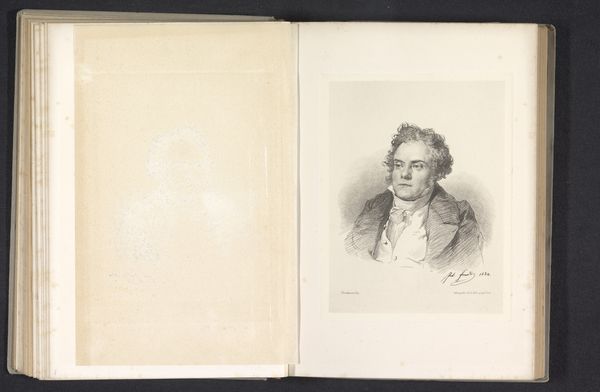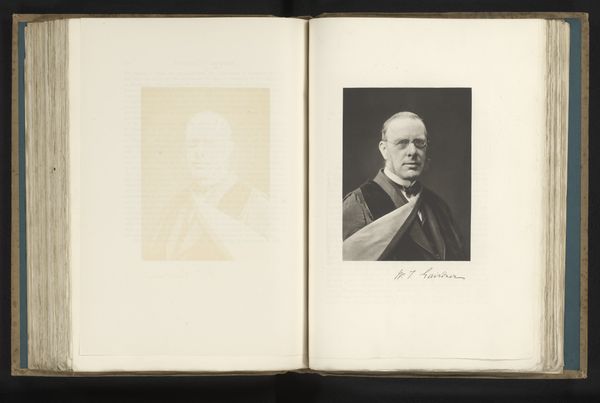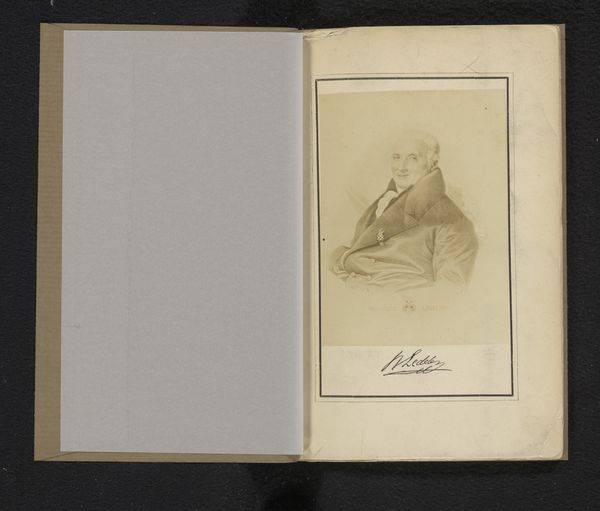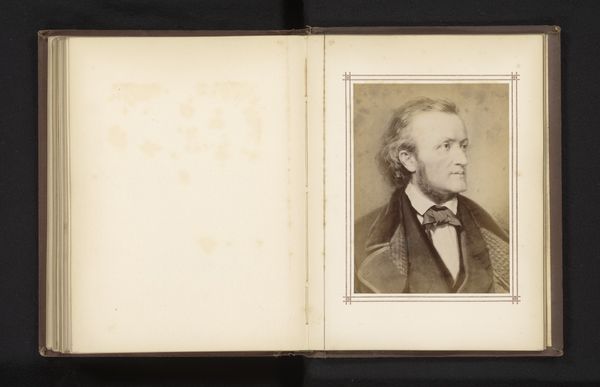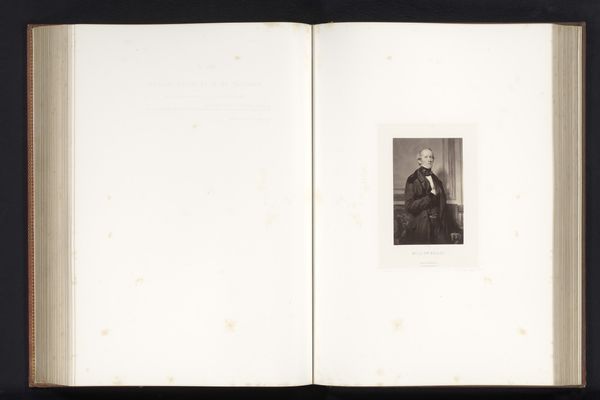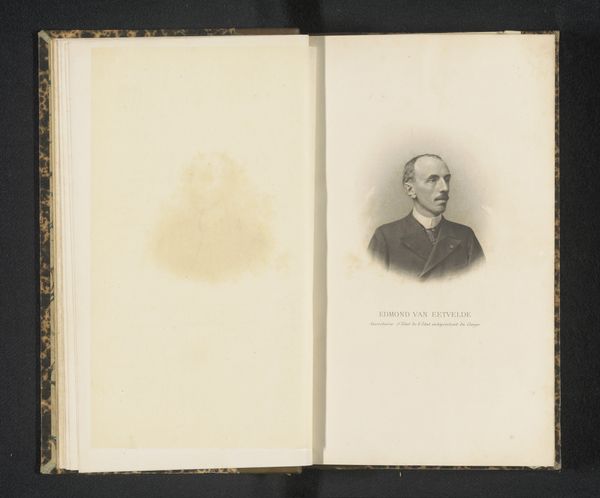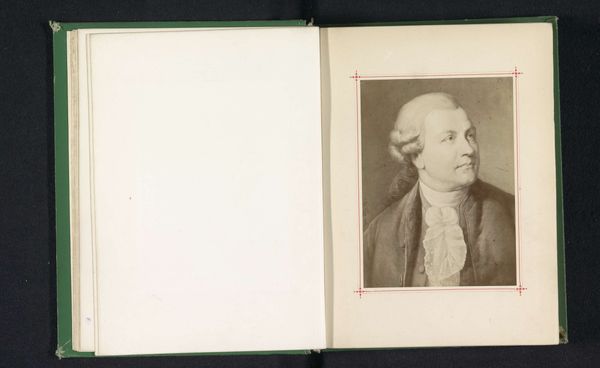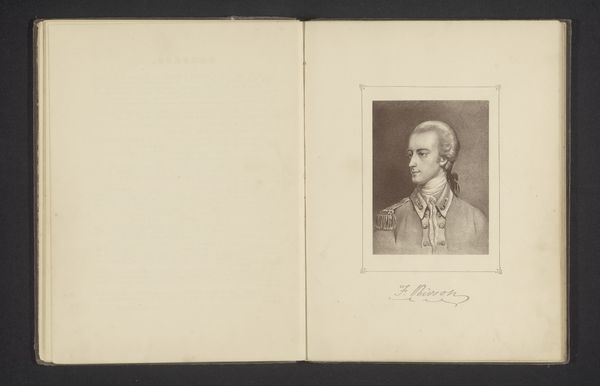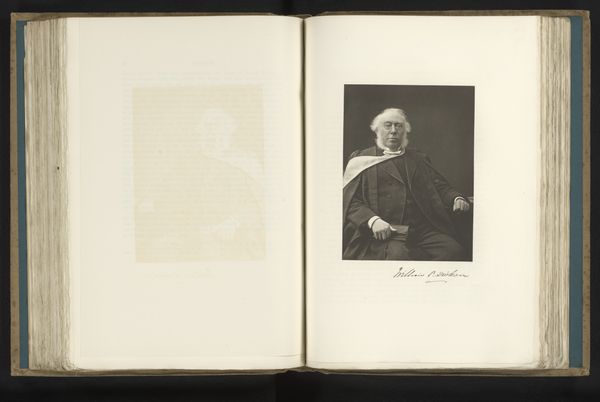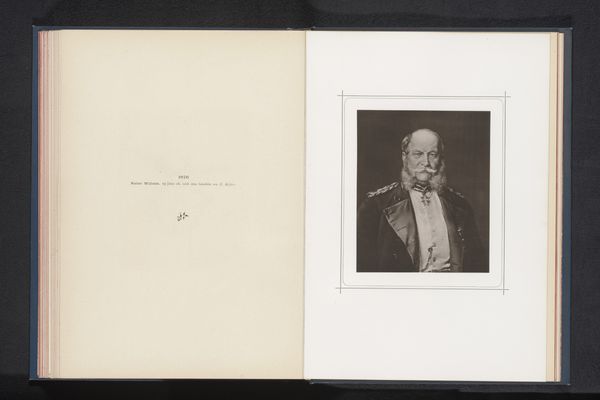
Fotoreproductie van een prent naar een schilderij, voorstellende een portret van Johann Černičew before 1883
0:00
0:00
print, paper, engraving
#
portrait
#
aged paper
#
homemade paper
#
paperlike
# print
#
hand drawn type
#
paper texture
#
paper
#
personal sketchbook
#
hand-drawn typeface
#
folded paper
#
thick font
#
engraving
#
historical font
Dimensions: height 174 mm, width 123 mm
Copyright: Rijks Museum: Open Domain
Curator: This is a photographic reproduction of a print, which itself was based on a painting. It portrays Johann Černičew, and dates from before 1883. It's striking how time and reproduction layer upon each other here. Editor: I find the visual effect quite stark. The tonal range is limited, creating an almost ghostly quality. I'm drawn to the textures in the paper, too. It really emphasizes the material nature of the image. Curator: Absolutely. The layers of mediation invite us to consider the act of portraiture itself. Who was this man, Johann Černičew, and why was it important to create and disseminate his image in this way? It prompts reflection on class, power and visibility. Editor: I am more fascinated by the means of production—the move from painting to print to photographic reproduction, each transformation inevitably altering the image and the labour embedded within. Curator: But consider, too, that prints like these were often circulated within specific social and intellectual circles. Analyzing them within the context of those networks tells us much about prevailing social values and power structures. These portraits cemented and reaffirmed an elite identity, didn't they? Editor: That's definitely true. But I keep returning to the texture of the paper. You see its age and handling and also what this image is *for*: dissemination. This isn't only about power and prestige but a concrete attempt to create access. Curator: Yes, it's a tension between democratizing the image while simultaneously upholding the elite status of the sitter. The reproduction becomes a symbol of that complex relationship. The history and the materials offer different angles. Editor: I think my interest always lies in what making can tell us about our societies: who held the tools, who had access to materials, what skill was required... Curator: And for me, it's how those productions create meaning, solidify social hierarchies, and shape our understanding of the past and present. It becomes an analysis of visual representation as a site of power. Editor: Fascinating. I think we’ve found a shared understanding despite approaching it from different vantage points. I hadn't considered so much what these prints really represented as representations themselves. Curator: And I must remember that behind these concepts there were hands and labor that gave the image its material presence and life. Thanks.
Comments
No comments
Be the first to comment and join the conversation on the ultimate creative platform.

